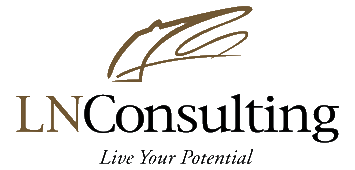What's the strategic imperative driving thriving teams, ethical leadership and sustainable impact?
- Paul Saunders

- Jul 21
- 3 min read

In this age of metrics, deliverables, and bottom lines, leaders are now being called to embrace a different kind of effectiveness measure for their performance—one rooted in relationships.
Relationship performance is not a soft skill, it’s a strategic imperative for thriving teams, ethical leadership, and sustainable impact.
The Rise of Relational Leadership
Relational Leadership Theory (RLT), grounded in social constructionism, reframes leadership as a process of meaning-making through dialogue, connection, and shared purpose. Unlike traditional models that emphasise positional authority or individual traits, RLT sees leadership as co-constructed, deeply contextual, and dynamically evolving.
Key principles of relational leadership include:
Inclusivity: valuing diverse perspectives and fostering participation
Empowerment: nurturing autonomy and shared responsibility
Purpose-driven action: aligning individual and collective meaning
Authenticity: building trust through vulnerability and integrity
Collaboration: moving from “power over” to “power with”
In the framework (shown below), the quality of relationships isn't a by product—it is the work. This framework offers a conceptual lens for evaluating leadership effectiveness by plotting Task Performance (delivery, execution, KPIs) against Relationship Performance (trust, empathy, psychological safety):
Task vs. Relationship Performance: The Latest Leadership Grid
High Relationship | Low Relationship | |
High Task | 💚 Integrated Leadership High execution + high trust. Strong culture, sustainable success. | 💛 Transactional Leadership Results-driven, but relational strain. Risk of burnout or turnover. |
Low Task | 💙 Empathetic Drift Warm culture, weak execution. Potential for groupthink or lack of accountability. | ❤️ Disengaged Leadership Low trust, low results. Often signals leadership crisis or toxicity. |
Relationship Performance in Action
Consider these examples of leaders who prioritise relationship performance:
Jacinda Ardern, former Prime Minister of New Zealand, embodied empathy, transparency, and human-centred decision-making during crises. Her relational leadership earned global respect and deep public trust.
Ed Catmull, co-founder of Pixar, created a culture of candour and psychological safety where vulnerability was not punished, but embraced—fuelling creative excellence.
Paul Polman, former CEO of Unilever, focused on stakeholder-driven leadership, aligning ESG commitments with authentic relational engagement across sectors.
Their success wasn’t despite relational leadership—it was because of it.
Stakeholder Relationships—Inside and Out
In today’s interconnected, values-driven business landscape, leadership is no longer confined to internal teams or hierarchical structures. One of the most critical skills for modern leaders is the ability to cultivate and navigate stakeholder relationships—both within the organisation and beyond it.
Internally, this means building strong connections across teams, functions, and levels:
Facilitating trust between departments and decision-makers
Bridging strategy with lived employee experience
Ensuring values alignment between leadership and operational layers
Externally, stakeholder relationships extend to:
Customers and communities
Partners and suppliers
Investors and regulatory bodies
ESG advocates and policy influencers
Relational leadership equips leaders to listen deeply, build reciprocal trust, and co-create value across stakeholder groups. It's about understanding not only what stakeholders expect—but what they hope for. When leaders build bridges instead of silos, they create momentum that drives innovation, reputation, and resilience.
This relational ethic also supports stakeholder psychological safety—ensuring people feel safe to engage, challenge, collaborate, and commit. Whether you're navigating a boardroom negotiation or community impact initiative, high-quality stakeholder relationships reflect and reinforce your leadership effectiveness.
Shifting the Leadership Conversation
It’s time we stop viewing relational dynamics as secondary to task execution. Relationship performance determines whether people want to follow you—or merely comply. As leaders, let's move toward integrated leadership that embraces both the head and the heart, strategy and empathy, delivery and connection.
Let’s lead with relationships. To further your leadership effectiveness contact Paul Saunders, Psychologist & Director LN Consulting Australia. Paul specialises in executive coaching, leadership development and cultural change. www.LNC.com.au





Comments